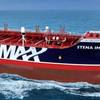Salvage Crews Avert Disaster in the Galápagos
Mammoet Salvage helps avert environmental disaster in the Galápagos Islands
Mammoet Salvage and its partner, CPT Remolcadores SA of Chile, recently responded to a State of Emergency issued by the government of Ecuador after cargo ship Galapaface 1 – loaded with 19,000 gallons of fuel, petroleum products, chemicals and tons of various cargo – ran aground while departing the island of San Cristobal. Recognizing the imminent disaster and threat of pollution to the UNESCO world heritage site, the Government of Ecuador contracted Mammoet Salvage and CPT to begin immediate operations to remove the ship.
The grounding occurred in the same harbor that naturalist Charles Darwin visited in 1835. The diverse and unique wildlife there led to his theory of natural selection and the publishing of the book Origin of Species and the theory of evolution. In 2001, a grounded ship in the same harbor caused a great deal of damage to the marine life, especially the marine iguana population.
Mammoet Salvage and CPT mobilized salvage experts to San Cristobal to assess the situation. Their survey of the casualty showed extensive damage to the hull, which flooded the cargo holds and engine room. A salvage plan was developed and submitted to the Ministry of the Environment.
Determined to prevent a disaster similar to the 2001 incident, the Ministry moved quickly and approved the salvage plan. Subsequently, Mammoet and CPT mobilized equipment, tugboats and personnel. The team of salvage experts and equipment were immediately mobilized. Personnel and equipment came from the U.S., Ecuador, Chile, The Netherlands and Singapore. The Ecuadoran Air Force supported the operation by flying specialized salvage equipment to San Cristobal.
Due to the remote location of the island, and the need for expediency, the salvage crew faced many challenges. The plan approved by the authorities was simple: strip the ship of all pollutants (oil, paints, fuel), cargo (barrels of oil, acid based batteries and tons of cement), floatable materials (plastics, furnishings, crew items, mattresses) and refloat the ship. A permit was issued to tow the ship out into the open ocean and scuttle her in 2,500 meters of water. This was the preferred solution, as the authorities deemed towing the damaged freighter to the coast too great a risk to the environment. Due to very volatile weather conditions in the area, the probability of the vessel capsizing or sinking in an uncontrolled manner was considered too high.
While the plan was simple, the execution was challenging, Mammoet said. Salvage divers were faced with the task of removing the pollutants and cargo manually. Naval architects designed two flotation tanks to make the ship buoyant. Holes in the hull were welded closed by the divers. The tanks, custom fabricated on the mainland, were shipped to San Cristobal by barge. These were filled with water, sunk alongside, and attached to the ship’s hull. Water was then pumped out of the tanks and holds of the ship to refloat her.
After two months of nonstop work, the Galapaface 1 was refloated on July 15. She was then escorted by the Ecuadorian Coast Guard and Navy, and towed to her final resting place.
The operation was completed without incidents or accidents and without any damage to the environment.
mammoetsalvage.com















